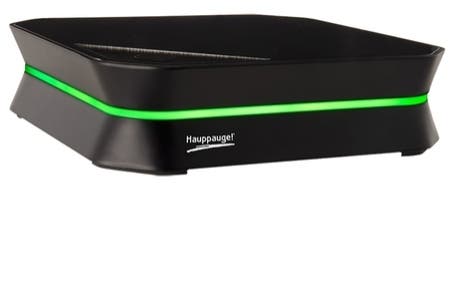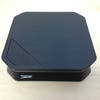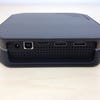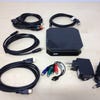Hauppauge HD PVR 2 review
Looking to record and share HD gameplay? Digital Foundry assesses a new contender.
Back at the dawn of the HD gaming era, options were limited when it came to recording high-definition video from your consoles: you'd need to spend hundreds - if not thousands - of pounds on high-end broadcast-quality equipment, followed by an equal level of investment in a PC powerful enough to run it. Hauppauge's 2009 vintage HD PVR had some serious image quality issues, but it was the first mainstream device to offer 720p and 480p capture functionality, and thanks to its onboard h.264 encoder, it could produce results with virtually any PC that had a USB2 port. Three years on and, in the face of stiff competition, Hauppauge has released a successor.
Unboxing the HD PVR 2 proves to be a pleasantly surprising experience. In an age where hardware manufacturers cut costs by removing essential accessories, this package contains everything you need to hook up the unit to your HD consoles. So, on top of the power supply and USB cable, there are two HDMI leads, a bespoke cable for connecting component sources to the device - and most surprising of all - a meaty, high-quality component hook-up for the PlayStation 3.
This latter accessory is essential owing to the fact that Sony digitally encrypts the HDMI output of its console in order to stop pirates making digitally precise copies of Blu-ray movies (pointless bearing in mind that pirate BDs are rips, not captures). However, the fact that it is separate and distinct from the adaptor that plugs into the device itself means that you can connect up any component-capable console you have - Wii, PSP, or even an original Xbox if you're that way inclined. The HD PVR 2 records standard-definition material too, supporting both 480p and 480i.
The actual unit itself is mostly unremarkable, but it's solidly constructed with decent-quality plastics, the two major case components meeting around an LED-illuminated centre strip. Dominating a corner of the top-face is a large triangular record button - a simple means for starting and stopping capture without being near your PC.
"The original Hauppauge HD PVR brought high-definition capture into the mainstream. This new product improves quality and functionality with HDMI inputs and video passthrough."
Set-up itself is a breeze - plug in the 6v power supply, connect the HDMI output to the screen, then attach your consoles. Perhaps one of the most useful aspects of the machine is its support for video passthrough: whatever source you feed it - whether component or HDMI - you can view the action in real-time on a connected display. This proves to be a fundamentally essential addition over the older HD PVR as the capture software itself had around three-to-five seconds of preview lag when we ran it on an older Core 2 Duo laptop, making it an almost complete waste of time. Mileage may vary depending on the PC you attach, however.
As long as the unit is connected to the mains, the video passthrough remains functional, whether you have a computer attached or not, meaning that the HD PVR 2 can be seamlessly integrated into a home set-up. This sounds great in theory, except that the 24-bit RGB signal of the HDMI source appears to be downgraded to an image with a large degree of chroma sub-sampling. In plain English this means that pure reds and blues in particular will look more jagged - a by-product of how the signal is being downscaled internally. Depending on the image, it can stick out like a sore thumb, but at range you probably will not notice it.
Other aspects of the installation procedure are extremely straightforward. The device hooks up to your PC via the supplied USB cable, and installation via the CD (or downloading from the website for those of us who don't use optical drives any more) is a cinch - literally a case of pressing one button for loading up the drivers and another for the bundled capture software.
The capture process
Despite the bundled software being rather slow to respond, recording footage is a relatively painless operation - after all, how difficult can using a start/stop button actually be? However, digging into the options available opens up a wealth of useful customisation potential. For a start, you can record into several different containers - M2TS, TS and MP4 - and there are far more h.264 encoding options available for tweakery by the user than there were in the first HD PVR. On top of that, there's also the option to perform a real-time downscaling of the video - useful for keeping file sizes smaller if you don't actually need native 720p or 1080p footage. You can even adjust audio encoding options too, with the AAC compressor offering up to 256kbps of bandwidth - plenty for decent quality sound.
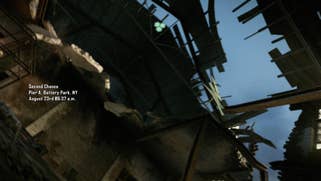


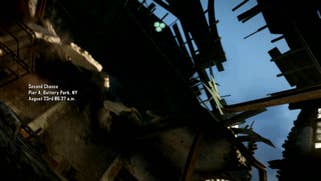

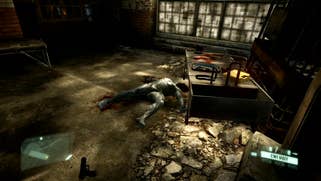
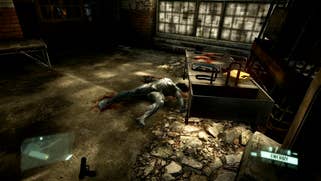









Recording itself is set to 4mbps by default, but on these low-cost hardware h.264 encoders, the simple rule of thumb is that the more bandwidth you throw at the recording, the better the result. The HD PVR 2 tops out at 14mbps - weighing in at around 100MB per minute of footage. You'd think that this would be more than enough, but some video game footage is incredible difficult to encode, and the resultant quality level can look distinctly under-par, plagued with blocky artifacting.
The most obvious solution would be to do away with bandwidth targets and instead encode to a set quality level, adjusting bitrate on the fly according to the requirements of the image itself - it's built into the h.264 standard and is a staple component of the x264 open source encoder, amongst others. Unfortunately it's not an option here (or indeed on any other device in the same price range) and that's unfortunate, as issues with image quality can arise with the fixed bandwidth approach.
However, the good news is that the HD PVR 2 incorporates a very useful feature - frame-rate decimation. In an era where most games only run at 30FPS, and where YouTube itself operates with the same limitation, why bother capturing the full 60 frames per second at all? You're either impacting on quality by cramming twice as many frames into the available bandwidth, or else you're bloating file-sizes instead by encoding video where every other frame is going to be thrown away anyway when viewed on YouTube.
As you'll see in the comparison galleries above, the 30FPS captures offer considerable quality benefits compared to 60FPS videos recorded with the same levels of bandwidth. Alternatively, you can lower the recording bitrate and get much the same quality as you would recording at 60FPS using more bandwidth.












It does 1080p too
So what of the HD PVR's flagship 1080p support? Well, it's there and it works, but it comes with a couple of limitations. Perhaps the most impactful one is the fact that it only works with the HDMI input, meaning that the console with the stronger 1080p support - PlayStation 3 - won't work with it due to its encrypted digital output.
This is especially irritating as the PS3 itself quite happily supports full HD over component, but we imagine that the range of off-the-shelf HD analogue to digital converter processors out there that also support it are somewhat thin on the ground. Short of going out there and finding a means to decrypt HDCP, you'll have to accept 720p or 1080i from PS3. There's nothing to stop you attaching a top-spec PC as a gaming source though, where arguably the HD PVR 2's 1080p functionality has the most value.
The second limitation with 1080p capture comes down to frame-rate. Those looking to record the 1080p60 splendour of a maxed-out PC game are going to be disappointed - once again there are very few hardware h.264 encoders out there that can handle full HD at the maximum frame-rate, so the software automatically decimates down to 30FPS. It's a compromise, but bearing in mind the 30FPS cap on YouTube streaming, it's one we can live with. What is worth pointing out is that while the recording sees a frame-rate deficit, the real-time HDMI passthrough output still operates at the full 60Hz.








Hauppauge HD PVR 2: the Digital Foundry verdict
We've never felt particularly comfortable with the quality of the results of these hardware video encoding solutions - HD gaming video is notoriously difficult to compress with any kind of consistent quality using these devices, and if you're looking for the best overall results, we stand by the kit recommendations we made last December, which offer superb results no matter what material you're recording. The bottom line is that the HD PVR 2 produces a variable quality level owing to the unsophisticated level of the h.264 encoding on offer - just like every other device based on the same principle. On the flipside, the disadvantage of a quality-driven approach is the sheer size of the captures and the fact you really need a decent desktop PC to get the job done to a satisfactory degree. There's also the thorny issue of cost, portability and ease of use.
"This product is a significant improvement over its predecessor but the market has moved on and rivals like the Elgato Game Capture HD feature must-have features missing from the HD PVR 2."
The Hauppauge HD PVR 2 still possesses many of the limitations of its predecessor, but it's a significant upgrade in many ways: HDMI input is welcome, the video passthrough is a godsend, and the ability to further tweak the h.264 encoder and dedicate more bandwidth to a 30FPS encode makes a genuine difference. It's an inherently compromised product, but enough tweakables have been included to make up for some of the quality deficit.
The HD PVR 2 is a decent product but there is perhaps a sense that Hauppauge hasn't done enough to compete with the major competitors elsewhere in the market. For starters, it requires a computer to be attached in order to record video - something that wasn't an issue with the Avermedia Game Capture HD. That product may have some notable image quality issues, but it works as a complete, standalone unit - you can even record directly onto a USB stick.
There's also the Elgato Game Capture HD to consider: a much smaller unit - powered entirely from the USB port alone - that records at up to 30mbps, powering past a lot of the image quality issues through sheer bandwidth. It also features a Flashback option, allowing you to go back through your last hour of gameplay and pick out the snippets you want - a far more flexible arrangement than anything the HD PVR 2 offers, where the only alternative is to record anything and everything and edit out the bits you want later.
Viewed in isolation, this new contender from Hauppauge is a genuinely decent - if not spectacular - product, but in a market sector defined by flexibility and ease of use, it lacks key features that set the competition apart. A software revision and firmware update could improve the product significantly, and we'd hope that Hauppauge will be looking at the functionality and higher levels of capture bandwidth offered by the Elgato product with a view to doing just that...
